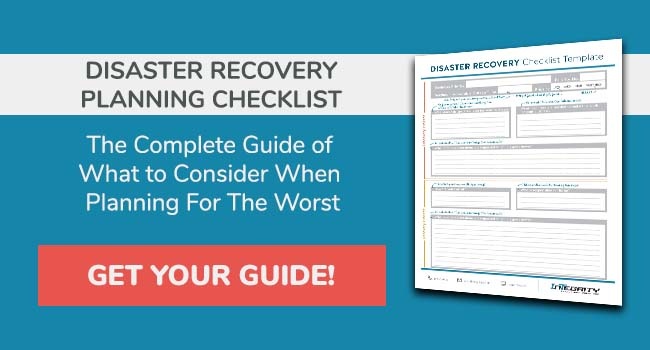How To Build a Disaster Recovery Plan Template for Your Business

Any IT disaster is now a business disaster. Having a disaster recovery template is a must for every business.
In the event of a disaster, your template and later, your plan, will guide the steps you'll take to recover from a major incident. Where do you start when building a disaster recovery template for your business? Right here:
Discovery Phase:
Before you begin building your template, you need to nail down your Business Priorities. These are the systems, networks, and servers that need to be up and running for your business to operate. For example, you need channels of communication like a phone system, e-mail server, and Internet access. You need access to employee records and customer databases. You need your billing records and transaction records available at all times. Identifying these priorities is essential in building a disaster recovery plan template that addresses how to restore them if disaster occurs.
SEE ALSO: Find out how secure your business is with a free tech security consultation
Maximum Allowable Outage Time:
Next, as you begin your template, determine what the Maximum Allowable Outage Time is for each of your ordered priorities. That will give you direction on what takes recovery precedence and what can wait in line a little longer. It also helps you visualize the unseen hierarchy of your business and gives you the ability to better protect the systems, networks, and servers that your business absolutely cannot do without for an extended period of time.
Priority Details
This is the time to dive deeper into each priority. Determine what each one does, what you need for it to do it, and what happens if it doesn't.
What does it do, specifically?
Identify what the named resource does, specifically, for your business. Using a debit card/credit card payment system as an example: it allows your business to receive payments from debit cards and credit cards.
What resources are needed to make it work?
Continuing to use a debit card/credit card system as an example, 'Internet access' would be a likely answer here (even though there are payment terminals that can do without). But, most likely, your POS system relies on the Internet because it's faster and more efficient. Without Internet access, you can't accept payments.
What business operations are impacted when this goes down?
Again, using debit card/credit card/POS as an example, your business is unable to accept payment by card. While that may not shut you down, it could very well turn away customers who don't carry cash and don't have access to an ATM. If it's down for an hour, that might not qualify as a disaster. If it's down a day or more, it's a different story.
Recovery Process
How do you find out?
It's important to know how someone will first discover an outage. This can be as simple as a 'no Internet access' alert when trying to get online or no dial tone over the phone. It's helpful to know where the disaster recovery process will begin as you're constructing your template.
Who needs to know?
This is where you list out your personnel resources and contact information. In the event of a disaster, time is everything. You can't be stuck deciding between point people. This list gives you a concrete contact to reach out to and alternatives if that person is unavailable.
What steps need to be taken?
These are the action items that start the recovery process. This can include internal actions like 'restart the system' or external actions like 'contact your IT services provider.' Action items should be listed in order and have several paths to further steps depending on the success or failure of the initial step taken.
Disaster Recovery needs to be an integral part of business planning. Build a template and then a plan, so that your business will be ready to recover from any disaster.
Get started right now with our free ebook and planning template:

